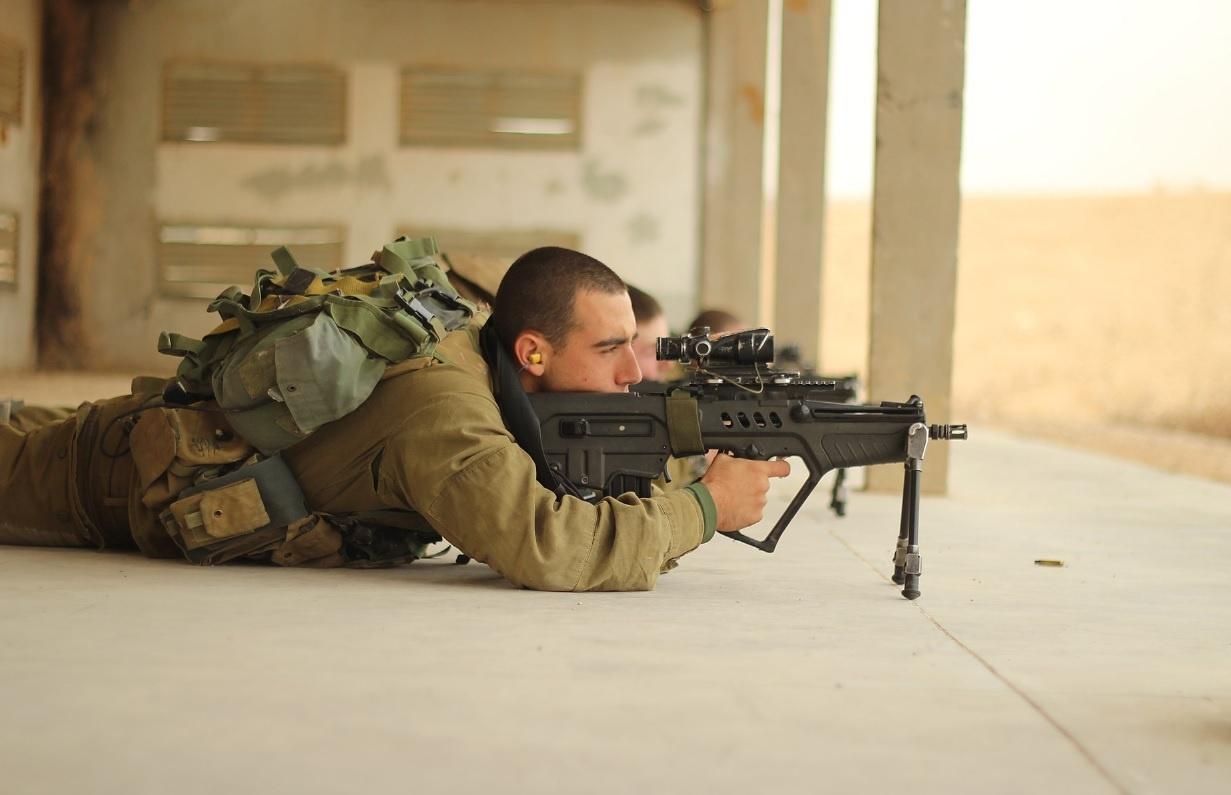The deadly business that Israeli infantry soldiers will have to engage in when they enter Gaza will be conducted with Israel’s own assault rifle — the Tavor.
While the Israeli Defense Force (IDF) has spent the last few days executing airstrikes across Gaza to hit targets that may reduce the risk to troops in the next stage of the war, it will have to enter the long thin strip of territory to oust Hamas militants sooner or later.
When it does, it will breech Gaza with its Merkava tanks, D9R armored bulldozers and Eitan armored personnel carriers. The armored vehicles will almost certainly face Hamas booby traps and ambushes in the densely packed urban environment. IDF soldiers will face the same threats. But they’ll be asked to go where vehicles cannot — to enter the Byzantine network of tunnels Hamas has bored below city streets.
They’ll be armed with Israel’s TAR-21 “Tavor,” a second-generation indigenous assault rifle that replaced American-made M16 and M4 rifles and the country’s own Galil rifles in the IDF. Designed and built by Israel Weapon Industries, the Tavor is a bullpup-type rifle. Its magazine is inserted into the stock behind the trigger housing rather than in front of it as in more conventional weapons like the M16 or M4.
The design reduces the overall length of the rifle, making it more compact and easier to wield. It also reduces the visual signature of the gun against a soldier, indirectly reducing the combined profile. Despite being shorter, bullpup designs enable barrel length to be retained, thus preserving muzzle velocity, range and ballistic effectiveness. The Tavor’s 18-inch barrel—longer than the barrel of the U.S. Marines’ M27 Infantry Automatic Rifle— fits within a 28-inch long rifle.
In the streets, crumbled structures and tunnels of Gaza, the TAR-21’s compactness and relatively light weight (just above seven pounds) will be of value. Easier to swing through a range of motion than the 35-inch long AK-47 Kalashnikov largely used by Hamas militants, the Tavor fires 5.56mm rounds (at up to approximately 950 rounds per minute) from a 30-round magazine.
Ironically, its long-stroke gas piston system owes its origins to the AK-47. But the Tavor is more reliable and easier to maintain than the Kalashnikov, though the AK’s 7.62mm rounds are ballistically heavier. The Tavor is fully ambidextrous, with its fire selection (full or semi-automatic) and safety switches on the left and right sides of the rifle. In the close, dark confines of a tunnel or turning corners among rock-strewn walls, such ergonomics are important.
Sighting and aiming in close-quarters, particularly within dark structures, can be especially challenging. In such scenarios the TAR-21’s ITL MARS (Multi-purpose Aiming Reflex Sight) will be of considerable utility. Made by Israel-based ITL Optronics, the MARS combines optical and laser sights. The laser may be either visible or infrared and is activated via a pressure switch.
A portion of the infantry entering Gaza (or special forces operators already there) will carry an even more compact version of the gun, the CTAR-21, which incorporates a shorter 15-inch barrel. The Tavor can accommodate a grenade launcher and noise suppressor, accessories which will almost certainly be employed in Gaza.
The IDF began accepting Tavors in 2004 and in 2009 it became the standard-issue assault rifle. It has subsequently been exported to more than 30 countries. Sadly, the present conflict is not the first in which the TAR-21 has seen service in Gaza.
A three-week fight between Hamas and the IDF from late December, 2008 to mid-January, 2009 saw Tavors in action where they performed impressively, according to Israeli after-action reports.
The IDF has evaluated the U.S. Army’s new XM7 assault rifle and found it to be of interest but for now it will undertake a gruesome fight with its Tavors.
Read the full article here





